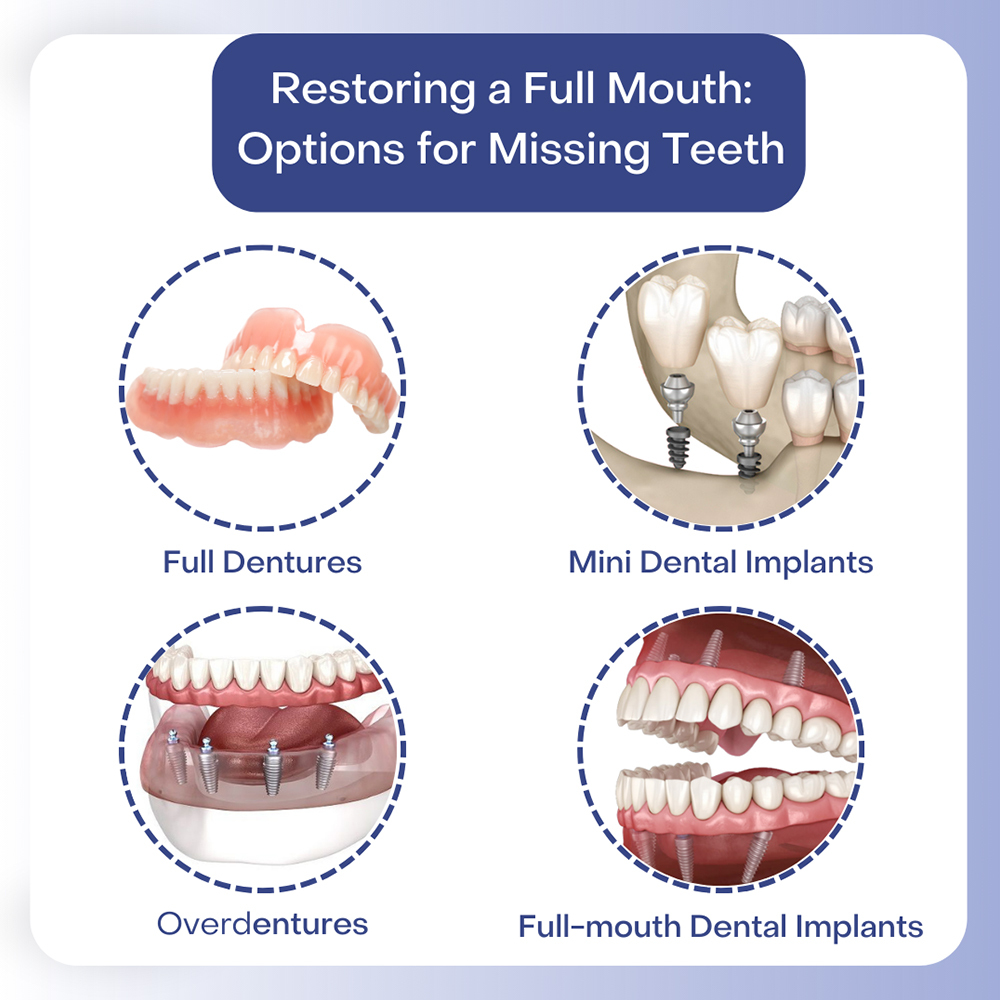Unknown Facts About Dental Sense
Unknown Facts About Dental Sense
Blog Article
8 Easy Facts About Dental Sense Described
Table of ContentsFacts About Dental Sense RevealedUnknown Facts About Dental SenseAbout Dental SenseSome Known Incorrect Statements About Dental Sense
are medical gadgets operatively dental implanted into the jaw to recover an individual's capacity to eat or their appearance. They offer support for artificial (fake) teeth, such as crowns, bridges, or dentures. When a tooth is lost because of injury or disease, a person can experience complications such as quick bone loss, faulty speech, or adjustments to chewing patterns that lead to discomfort.Oral dental implant systems consist of an oral implant body and dental implant joint and may likewise include an abutment fixation screw. Dental implants. The oral implant body is surgically put in the jawbone instead of the tooth's origin. The dental implant abutment is normally affixed to the implant body by the joint addiction screw and expands via gum tissues right into the mouth to support the attached fabricated teeth
(https://sitereport.netcraft.com/?url=https://nearme.vip)Framework of The Oral Implant System picking dental implants, talk with your dental provider concerning the possible benefits and risks, and whether you are a candidate for the procedure. Things to consider: Your total wellness is a crucial variable in identifying whether you are an excellent candidate for dental implants, just how long it will certainly take to heal, and the length of time the implant may remain in place.
Smoking cigarettes might impact the healing procedure and reduce the long-term success of the implant. The recovery process for the dental implant body might take several months or longer, during which time you normally have a temporary abutment in place of the tooth. the dental implant treatment: Carefully comply with the oral health instructions provided to you by your dental supplier.
Getting My Dental Sense To Work
Implant failing can cause the demand for another medical procedure to repair or replace the dental implant system. Brings back the capability to eat Brings back aesthetic look Assists maintain the jawbone from diminishing as a result of bone loss Preserves the wellness of the bordering bone and gum tissues Assists keep surrounding (close-by) teeth secure Boosts high quality of life Damages to bordering natural teeth during dental implant placement Injury to the surrounding tissues throughout surgical procedure, such as sinus perforation Injury during surgery (for instance, fracture of bordering jawbone) Insufficient function, such as feeling like the teeth do not bite with each other usually A feeling that the tooth is loose or twisting in location resulting from an abutment screw loosening up Implant body failure (looseness of the implant body) because of systemic infection, which might be more probable in clients with unchecked diabetics issues as a result of regional infection in bone and gum tissues sustaining the implant body because of delayed healing, which might be extra likely in patients that smoke Trouble cleaning the periodontals around the implant, leading to poor dental health Untreated periodontal disease Post-surgical numbness because of nerve impingement or damage Always notify healthcare service providers and imaging technicians that you have oral implants prior to any kind of magnetic vibration imaging (MRI) or x-ray treatments.
FDA is not aware of any unfavorable events reported for MRI or x-ray procedures with dental implants. Oral implants systems are commonly made of materials that comply with international consensus criteria of the International Organization for Standardization (ISO) or ASTM International. These requirements have details of what makes a secure product.

An oral implant is a structure that changes a missing out on tooth. With screw-like tools, the surgeon inserts a dental implant into the jawbone, and it serves as an anchor for an artificial tooth, called a crown. A device called a joint attaches the fabricated tooth to the dental implant. The crown is tailor-made to fit the individual's mouth and match the shade of their teeth.
The Best Strategy To Use For Dental Sense
Some individuals are not qualified for oral implant surgery. It is for dental surgeons to operate individuals with: severe illnessuncontrollable metabolic diseasebone or soft cells condition or infectionIf these concerns are dealt with, an individual can have the surgical procedure. In, dental surgeons avoid operating individuals with: If individuals with any one of the above undergo dental implant surgical procedure, there is a higher threat of the dental implant stopping working.

Dental implant surgical procedure is a customized process. It's not the very same for everyone. The following provides a basic overview of what you can anticipate your dental practitioner, oral specialist, periodontist or prosthodontist to do: Position the implant surgically. Provide you time to recover. Connect the post and last crown, bridge or denture.
Next off, your doctor will very carefully put the dental implant right into your jaw. If your implant is near the front of your mouth, your dentist will certainly make a short-lived tooth for you to wear up until you recover.
Not known Incorrect Statements About Dental Sense
Your service provider can tell you what to anticipate in your scenario. Throughout the recovery stage, your jawbone needs to fuse to other the dental implant. This procedure, called osseointegration, is critical for security and lasting success. This procedure can take anywhere from three to 9 months. In some cases, it may take longer.
Once your dental implant heals, your dentist can connect the abutment (little port article) and your final restoration (crown, bridge or denture). This generally takes concerning one hour to finish and may call for a 2nd small surgery. You shouldn't feel any discomfort throughout your oral implant treatment because your service provider will make use of drug to numb your periodontals.
Report this page